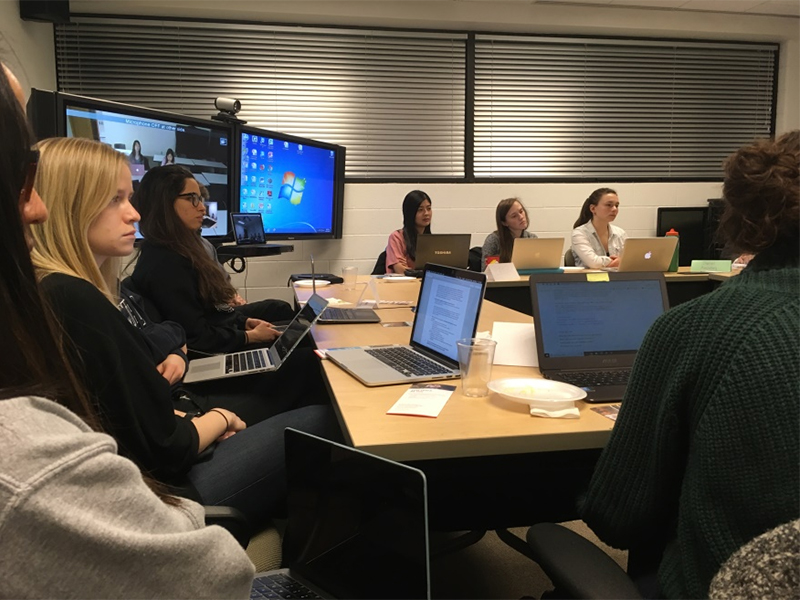In the spring of 2017, Hannah Samuels, who was a first-year medical student at the University of Toronto at the time, wanted to find a way to connect medical students from around the world. Her first idea was to create an exchange program, but she realized it wouldn’t be practical. So she kept at it.
“What’s a way to get medical students connected where they don’t need to invest so much money or time into it, so that it becomes something that’s feasible and will become enjoyable for them?” she wondered.
Eventually, she realized that using new technology to link medical students was the way to go.
READ: ISRAELI MEDICAL SCHOOL OFFERS SCHOLARSHIPS FOR CANADIAN STUDENTS
“Maybe we don’t need an exchange, we don’t need to actually be there, but we can be there virtually for each other, and that requires no money,” she said.
Samuels approached her classmate, Vanessa Rojas-Luengas, and asked if she’d like to help. Rojas-Luengas said yes and the two became co-directors of the Global Medical Student Partnership (GMSP).
According to Samuels, GMSP exists to “connect medical students from around the world, in order to create an international network of medical students that will then go on to become an international network of physicians.”

“To learn from each other, to learn from our health-care system, and how we tackle common global health issues that fundamentally have common underlying issues,” added Rojas-Luengas. “To improve the communication skills of our members … and also communicating beyond the boundaries and assumptions we may have.”
Last summer, Samuels and Rojas-Luengas set about creating their program. They had to find other schools and students to work with, and figure out how the program would operate.
They decided to pair Canadian medical students with a student from Israel, Jamaica, Saudi Arabia or Ethiopia. There were 20 students from the University of Toronto and five each from those four countries, for a total of 40 students. They also recruited Dr. Ashna Bowry and Dr. Marcus Law to be faculty leads.

Samuels and Rojas-Luengas decided to focus the pairs on a series of case studies, which they created by researching interesting and important topics in global health and coming up with questions.
The topics included traditional and naturopathic medicine, women in health, assisted dying and medicine in conflict zones. They also created a pandemic scenario with a fictional bug that echoed the symptoms of depression, to show how it has spread around the world.
The students had a month to discuss the cases with their international partners over Skype and submit their answers to the questions. At the end of the month, GMSP held a reflection session, where the answers were shared and local experts came to talk about the issues. The sessions were recorded and sent to the partner students in the other countries.

Arman Zereshkian, the associate director of GMSP, thought the program’s pilot year was a success.
“The students came together with the speakers and the questions really created environments where a lot of interesting discussions were had with the speakers,” he said. As for the student partnerships, “they really were able to see how things were done differently in different jurisdictions and they learned a lot more about global health realistically, (rather) than just abstract concepts.”
Rojas-Luengas was paired with an American student at a medical school in Haifa. She said that she enjoyed researching the different cases from both a Canadian and an Israeli perspective.
Since Samuels, Rojas-Luengas and Zereshkian are entering their clerkship placements next year, they’ve passed the program on to incoming second-year students Jenna Moodie and Shirley Deng, who are looking to expand into other countries, including South Africa and the U.K.
